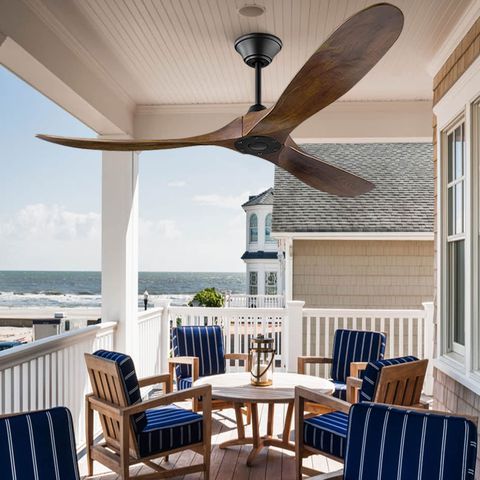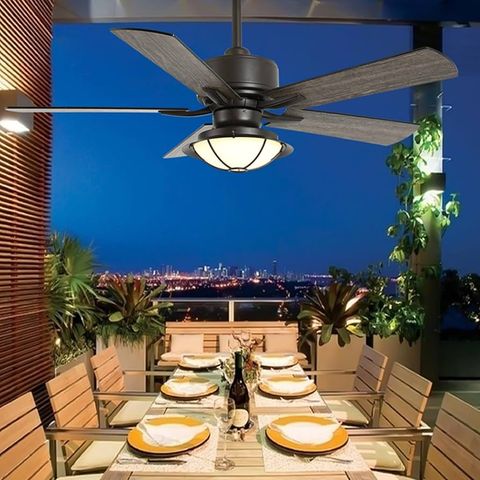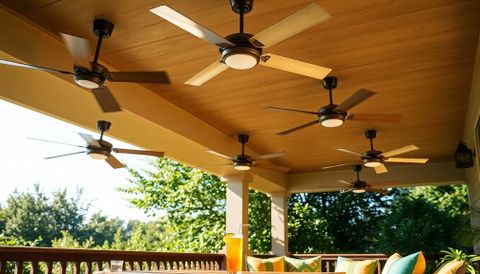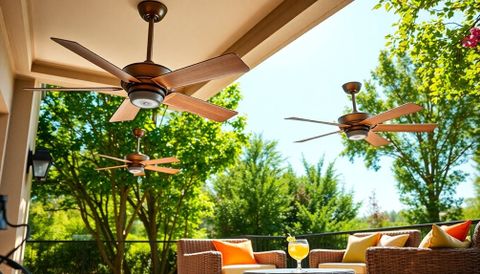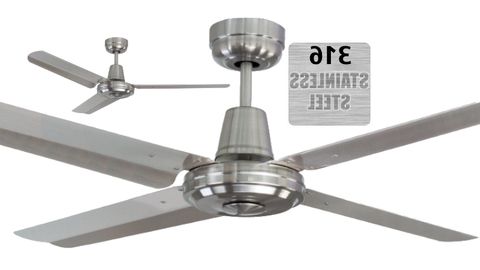Picture this: you’re relaxing on your open balcony, the gentle breeze rustling leaves, and the soft hum of a ceiling fan providing just the right amount of airflow. But what if that fan was making more noise than a summer storm? That’s exactly what happens when you choose the wrong fan for your outdoor space. Finding a ceiling fan that operates quietly while handling the unique challenges of an open balcony requires more than just a quick glance at product descriptions.
Outdoor living spaces have become increasingly popular, and balconies offer the perfect blend of privacy and connection with nature. However, bringing comfort to these open-air areas means addressing one major challenge: airflow without the noise. When you’re trying to enjoy the peaceful sounds of your neighborhood or the gentle rustle of trees, a noisy ceiling fan can completely ruin the experience. The good news is that with the right knowledge, you can find a fan that provides just the right amount of cooling without disrupting your outdoor sanctuary.
Understanding Noise Levels in Outdoor Environments
Before diving into fan selection, it’s crucial to understand how noise impacts outdoor spaces. In an open balcony area, sound behaves differently than indoors. The lack of walls means that even subtle noises can seem amplified. A fan that might be barely noticeable inside could become quite disruptive outside. Think about it this way – what sounds like a whisper in your bedroom becomes a roar when you’re standing on a balcony with no sound barriers around you.
The key measurement here is decibels (dB). For outdoor comfort, you want fans that operate under 40 dB. That’s roughly equivalent to a quiet library or a gentle rain. Anything above 50 dB starts to feel intrusive in outdoor settings. This threshold matters because it directly affects your ability to enjoy conversation, music, or simply the peaceful sounds of nature.
Key Features to Look for in Low-Noise Fans
Not all ceiling fans are created equal when it comes to quiet operation. Here are the essential features to focus on:
• Blade design: Look for fans with curved or twisted blades rather than straight ones. These designs move air more efficiently with less turbulence, which reduces noise generation.
• Motor quality: High-quality motors, particularly those with direct-drive systems, tend to produce less vibration and noise than belt-driven alternatives.
• Airflow efficiency: Fans that move more air with less energy often operate quieter because they don’t need to spin as fast to achieve the same effect.
• Balance mechanisms: Properly balanced fans reduce vibrations that cause rattling or buzzing sounds.
• Speed control options: Having multiple speed settings allows you to adjust airflow to match your comfort needs without running the fan at maximum speed constantly.
Consider a fan with a three-speed remote control. You can start on low during evening hours when you want minimal disturbance, then increase to medium or high as needed.
Material Considerations for Outdoor Durability
Outdoor environments are tough on equipment. Wind, moisture, and temperature fluctuations can quickly damage a fan not built for the elements. That said, durability and quiet operation aren’t mutually exclusive.
Materials play a big role in both aspects. Aluminum blades are lightweight and resistant to corrosion, making them ideal for outdoor use. They also tend to run more smoothly than heavier materials. Stainless steel components provide excellent weather resistance without adding unnecessary weight.
Avoid fans made primarily of plastic or wood, especially for outdoor installations. Plastic can warp in heat and cold, while wood may swell or shrink with humidity changes, affecting balance and creating noise issues.
A well-made fan with quality materials will not only last longer but also maintain its quiet performance over time. It’s worth spending a bit more upfront for something that won’t need replacement every few years.
Mounting and Installation Factors
Even the quietest fan can become problematic if it’s not installed properly. Mounting issues are among the most common causes of unwanted noise in outdoor ceiling fans.
First, ensure the mounting bracket is secure and designed for outdoor use. Loose brackets create vibrations that translate into annoying rattling sounds. Many outdoor fans come with special mounting hardware that accounts for expansion and contraction due to temperature changes.
The ceiling itself matters too. If you’re installing on a concrete or brick balcony, make sure you’re using appropriate anchors and screws. Soft ceilings or drywall may not support the weight and vibration of a ceiling fan properly.
Proper blade height is also critical. Blades should hang between 7 and 9 feet from the floor for safety, but not so close that they catch wind gusts or create turbulence. The right height ensures smooth airflow without extra stress on the motor.
Consider having a professional install if you’re unsure about the mounting process. A poorly installed fan can create more problems than it solves, especially in an outdoor setting where access is limited.
Real-World Testing and User Experiences
While manufacturer specifications are helpful, nothing beats real-world feedback. Many users report significant differences between similar models based on actual performance.
One common issue people face is the difference between indoor and outdoor versions of the same fan model. An indoor fan might be perfectly quiet, but when exposed to outdoor conditions, it often performs differently. This happens because outdoor fans are specifically engineered to handle weather exposure, which can affect their acoustic properties.
Users often mention that fans with larger blade spans (typically 52 inches or more) tend to operate more quietly than smaller fans. The reasoning is simple: larger blades can move the same amount of air with slower rotation speeds.
Another pattern emerges with budget versus premium options. While budget fans might save money initially, many users find that cheaper models develop noise issues after just a few months. Premium fans, despite their higher cost, often maintain their quiet operation for years.
Many homeowners swear by specific brands that specialize in outdoor applications. These companies typically invest heavily in research and development focused specifically on outdoor performance, including noise reduction.
Maintenance Tips for Long-Term Quiet Performance
A fan that’s properly selected but poorly maintained will eventually lose its quiet reputation. Regular maintenance is essential for keeping your outdoor fan performing at its best.
Start with simple checks: inspect blades regularly for signs of damage or imbalance. Loose screws or fittings can create noise that sounds like a squeak or rattle. Tighten everything you can access easily.
Dust and debris accumulation is another common culprit. Even small amounts of dirt on blades can throw off balance and create unwanted noise. Clean blades monthly during peak seasons.
Lubrication matters too. Some fans require periodic lubrication of moving parts. Check the manufacturer’s recommendations carefully. Over-lubrication can actually cause problems, so follow instructions precisely.
Keep an eye on motor performance. If you notice a fan that suddenly becomes louder or starts vibrating more than usual, it might be time for professional service. Early intervention prevents small issues from becoming major problems.
Consider seasonal maintenance. Before summer arrives, give your fan a thorough check. After winter, when the weather warms up again, do another inspection. Consistent attention pays dividends in quiet operation.
Choosing a low-noise ceiling fan for your open balcony isn’t just about finding something that works – it’s about creating an environment where comfort and tranquility coexist. The right fan can transform your outdoor space from merely functional to truly enjoyable. Remember that investing in quality, proper installation, and regular maintenance pays off in countless quiet evenings of relaxation.
Don’t let a noisy fan spoil your outdoor experience. Take time to research, consider your specific needs, and select a fan that matches both your comfort requirements and environmental conditions. With the right approach, your balcony can become a peaceful retreat where the only sounds are the gentle breeze and the soft whisper of air moving through well-designed blades. Whether you’re hosting dinner parties or enjoying quiet solitude, a properly chosen fan makes all the difference in creating that perfect outdoor atmosphere.

